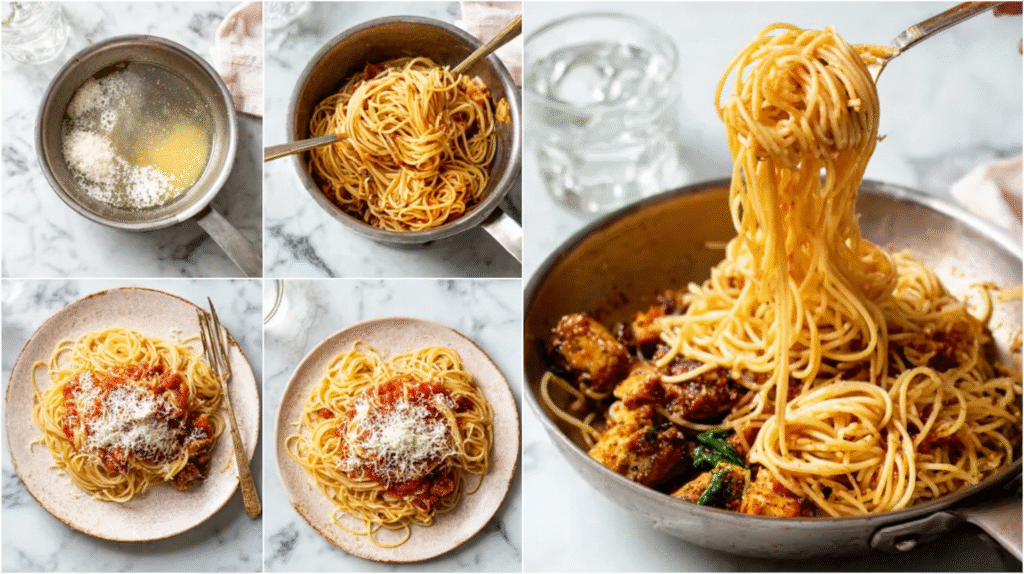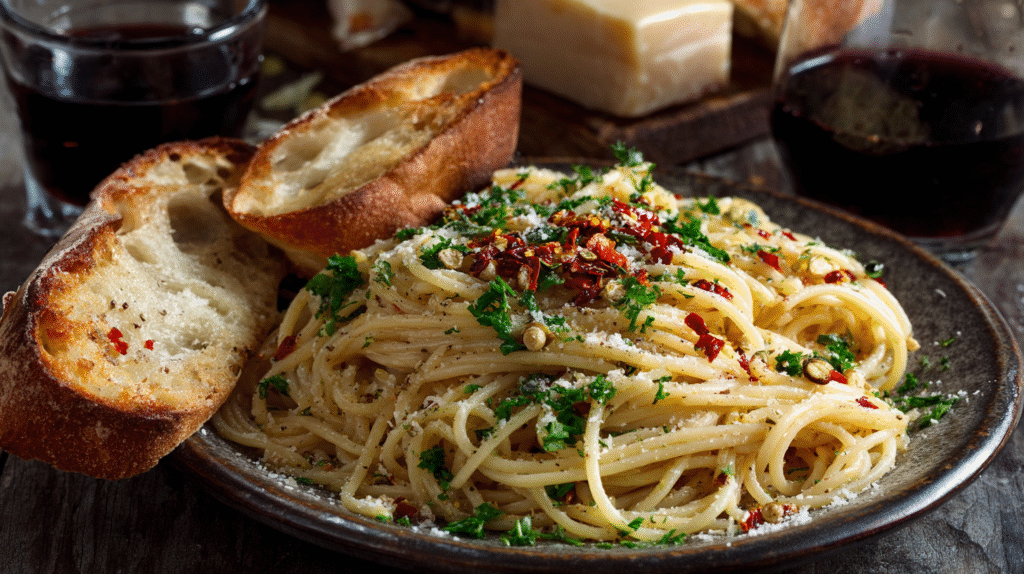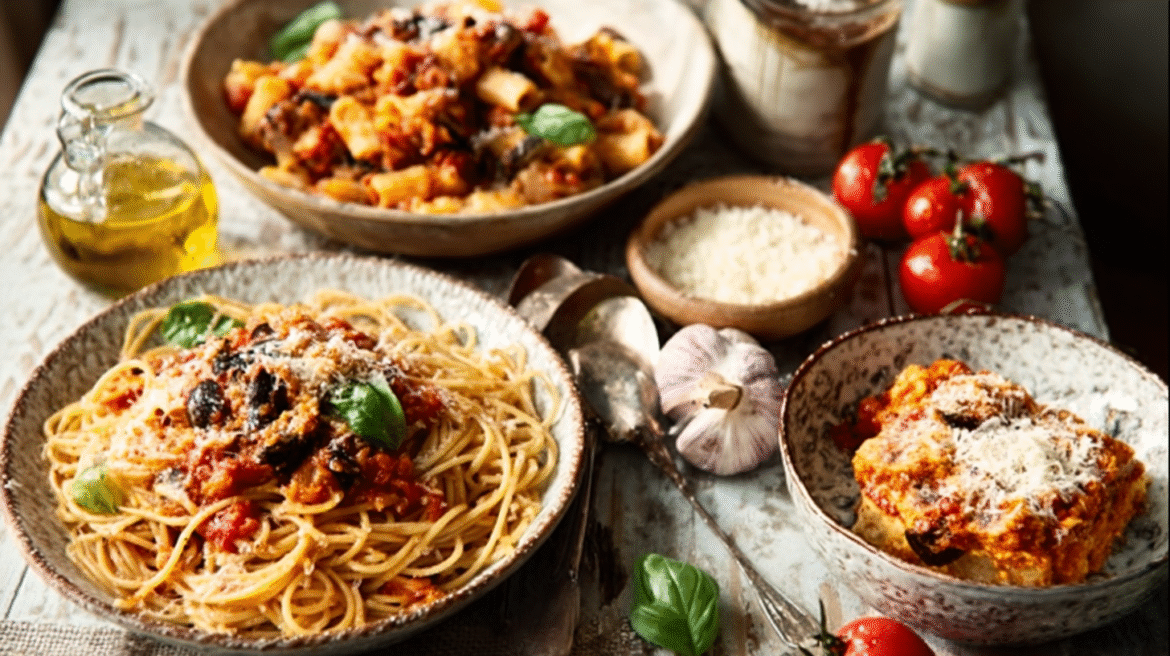Few foods capture the heart and soul of a country like Italian pasta dishes do for Italy. From the winding streets of Rome to the coastal towns of Sicily, pasta is more than just a meal—it’s a way of life. With hundreds of shapes, sauces, and regional variations, Italian pasta offers something for every palate.
Whether it’s the creamy richness of fettuccine Alfredo, the spicy kick of penne all’arrabbiata, or the slow-cooked comfort of lasagna alla Bolognese, each dish tells a story of tradition, culture, and passion.
The History of Pasta in Italian Cuisine
Pasta dates back to ancient times, with origins rooted in Etruscan, Greek, and Roman civilizations. However, it was in Italy, particularly during the 13th and 14th centuries, that pasta evolved into the staple we know today. With the invention of the pasta press and the development of durum wheat varieties, Italian pasta dishes became an essential part of everyday life and celebration.
Types of Italian Pasta
Italy boasts over 350 types of pasta and more than 1,300 names for them. Pasta comes in many forms—long, short, tubular, filled, and even flat.
Table: Common Types of Pasta
| Pasta Type | Description | Best Served With |
|---|---|---|
| Spaghetti | Long, thin cylindrical pasta | Tomato-based sauces, meatballs |
| Penne | Short tubes with diagonal cuts | Creamy or chunky meat sauces |
| Fusilli | Corkscrew-shaped pasta | Thick sauces, pesto |
| Linguine | Flat, long pasta | Seafood and light sauces |
| Farfalle | Bow-tie or butterfly shaped | Cream sauces, vegetables |
| Ravioli | Stuffed pasta pillows | Butter sauce, tomato sauce |
| Tagliatelle | Ribbon-like pasta | Bolognese and heavy meat sauces |
| Gnocchi | Potato-based dough dumplings | Butter sage or gorgonzola sauce |
Regional Specialties of Italian Pasta Dishes
Each Italian region has its own signature Italian pasta dishes, often based on local ingredients and traditions.
Northern Italy
Northern Italian cuisine features rich, creamy sauces and butter-based recipes.
Tagliatelle al Ragù (Bolognese)
Originating from Bologna, this dish uses flat ribbons of tagliatelle and a slow-cooked meat sauce made with beef, pork, tomatoes, wine, and milk.
Pizzoccheri
A buckwheat pasta from Valtellina, served with potatoes, cabbage, and melted cheese.
Central Italy
In regions like Tuscany and Lazio, pasta dishes feature bold, rustic flavors.
Pici Cacio e Pepe
Thick hand-rolled pasta with Pecorino Romano and black pepper. A minimalist Roman favorite.
Southern Italy
Known for vibrant tomato-based sauces, olive oil, and fresh herbs.
Pasta alla Norma
A Sicilian favorite with fried eggplant, tomato sauce, and ricotta salata.
Orecchiette con Cime di Rapa
“Little ears” pasta with sautéed broccoli rabe, garlic, anchovies, and chili flakes from Puglia.
Classic Italian Pasta Dishes You Must Try
Some Italian pasta dishes have achieved global recognition and remain classics on restaurant menus and dinner tables around the world.
1. Spaghetti Aglio e Olio
Ingredients: Garlic, olive oil, red pepper flakes, parsley, and spaghetti.
A humble yet flavorful dish that takes less than 20 minutes to prepare.
2. Lasagna alla Bolognese
Layered sheets of pasta with ragù, béchamel sauce, and Parmigiano Reggiano, baked to golden perfection.
3. Fettuccine Alfredo
Butter and Parmigiano create a rich, creamy sauce that coats fettuccine perfectly. Though Americanized, it has Roman roots.
4. Penne all’Arrabbiata
A spicy tomato sauce made with garlic and red chili peppers. “Arrabbiata” means “angry” due to its heat.
Table: Comparison of 5 Famous Italian Pasta Dishes
| Dish Name | Region | Sauce Base | Key Ingredients | Spiciness |
|---|---|---|---|---|
| Spaghetti Carbonara | Lazio | Egg and cheese | Guanciale, eggs, Pecorino, black pepper | Mild |
| Lasagna alla Bolognese | Emilia-Romagna | Tomato & béchamel | Ragù, béchamel, lasagna sheets | Mild |
| Penne all’Arrabbiata | Lazio | Spicy tomato | Garlic, chili, tomato, parsley | High |
| Pasta alla Norma | Sicily | Tomato-based | Eggplant, tomato, ricotta salata | Medium |
| Fettuccine Alfredo | Rome (variant) | Butter & cheese | Butter, Parmigiano | Mild |
How to Cook the Perfect Pasta
Ingredients (for 2 servings):
- 200 grams (about 7 oz) dried pasta (any type)
- 2 liters (8 cups) water
- 2 teaspoons salt
- Optional: 1 teaspoon olive oil (not necessary, but some prefer it)

Instructions:
Step 1: Boil the Water
Fill a large pot with about 2 liters of water and place it on high heat. Wait until it reaches a rolling boil—you should see consistent bubbling.
Step 2: Salt the Water
Once the water is boiling, add 2 teaspoons of salt. This is crucial—it’s the only chance to season the pasta from the inside out. Stir to dissolve.
Step 3: Add the Pasta
Add the dried pasta to the boiling water. Give it a quick stir right away so the pieces don’t stick together or to the bottom of the pot.
Step 4: Stir Occasionally
Throughout the cooking process, stir every couple of minutes. This helps prevent clumping and ensures the pasta cooks evenly.
Step 5: Check for Doneness
Start checking the pasta 2 minutes before the package time. Take a piece, let it cool slightly, and bite into it. It should be al dente—firm but fully cooked.
Step 6: Reserve Pasta Water
Before draining, scoop out about ½ cup of pasta water and set it aside. This starchy water can be used to thicken your sauce later.
Step 7: Drain the Pasta
Once the pasta is cooked, drain it immediately in a colander. Do not rinse it—this will wash away the natural starch that helps the sauce stick.
Step 8: Toss with Sauce
Transfer the hot, drained pasta directly into your pan of sauce. Toss it well on low heat for 1–2 minutes to fully coat the noodles. Add a splash of the reserved pasta water if needed to loosen the sauce or help it cling better.
Step 9: Serve and Garnish
Plate the pasta while it’s hot. Optionally, top with grated cheese, herbs, or a drizzle of olive oil for extra flavor.
Pasta Sauces: The Soul of Every Dish
The beauty of Italian pasta dishes lies in the sauces that transform simple ingredients into culinary masterpieces.
Tomato-Based Sauces
- Marinara: Garlic, tomatoes, basil.
- Amatriciana: Guanciale, tomatoes, Pecorino.
Cream-Based Sauces
- Boscaiola: Cream, mushrooms, peas, pancetta.
- Gorgonzola Cream Sauce: Melted cheese and cream.
Pesto-Based Sauces
- Pesto Genovese: Basil, pine nuts, Parmesan, olive oil, and garlic.
Vegetarian and Vegan Pasta Options
Italy offers plenty of options for non-meat eaters without sacrificing taste or authenticity.
Vegetarian Favorites
- Spinach and Ricotta Ravioli
- Mushroom Tagliatelle
- Pasta Primavera (pasta with seasonal vegetables)
Vegan Delights
- Pasta Pomodoro (simple tomato and garlic sauce)
- Zucchini Pesto Pasta
- Orecchiette with Chickpeas and Greens
Gluten-Free and Whole-Wheat Pasta Choices
Thanks to innovation in food manufacturing, gluten-sensitive or health-conscious eaters can enjoy Italian pasta dishes too.
Gluten-Free Options:
- Corn, rice, or chickpea pasta.
- Available in most traditional shapes.
Whole-Wheat Pasta:
- Higher in fiber and nutrients.
- Best served with bold sauces to balance flavor.
Popular Pasta Dishes Around the World Inspired by Italy
The global love for Italian pasta dishes has led to local adaptations across cultures.
| Dish Name | Country | Inspiration |
|---|---|---|
| Macaroni and Cheese | USA | Pasta with creamy cheese sauce |
| Japchae (Glass Noodles) | Korea | Pasta-like preparation |
| Spaghetti Neapolitan | Japan | Ketchup-based spaghetti |
| Pasta al Horno | Spain/Latin America | Baked pasta dishes |
Tips for Making Restaurant-Quality Pasta at Home
- Use high-quality ingredients – Fresh herbs, real Parmigiano, and extra virgin olive oil make a difference.
- Don’t rinse pasta – It washes off the starch that helps sauces stick.
- Toss pasta in sauce, not the other way around.
- Garnish smartly – Fresh basil, cracked pepper, or lemon zest enhance flavor.

Final Thoughts: A Plate of Tradition and Innovation
Italian pasta dishes are more than food—they’re an experience. They tell stories of family dinners, regional pride, and timeless techniques passed through generations. Whether you’re enjoying a humble spaghetti aglio e olio or a rich lasagna layered with love, there’s a perfect pasta dish for every palate.


